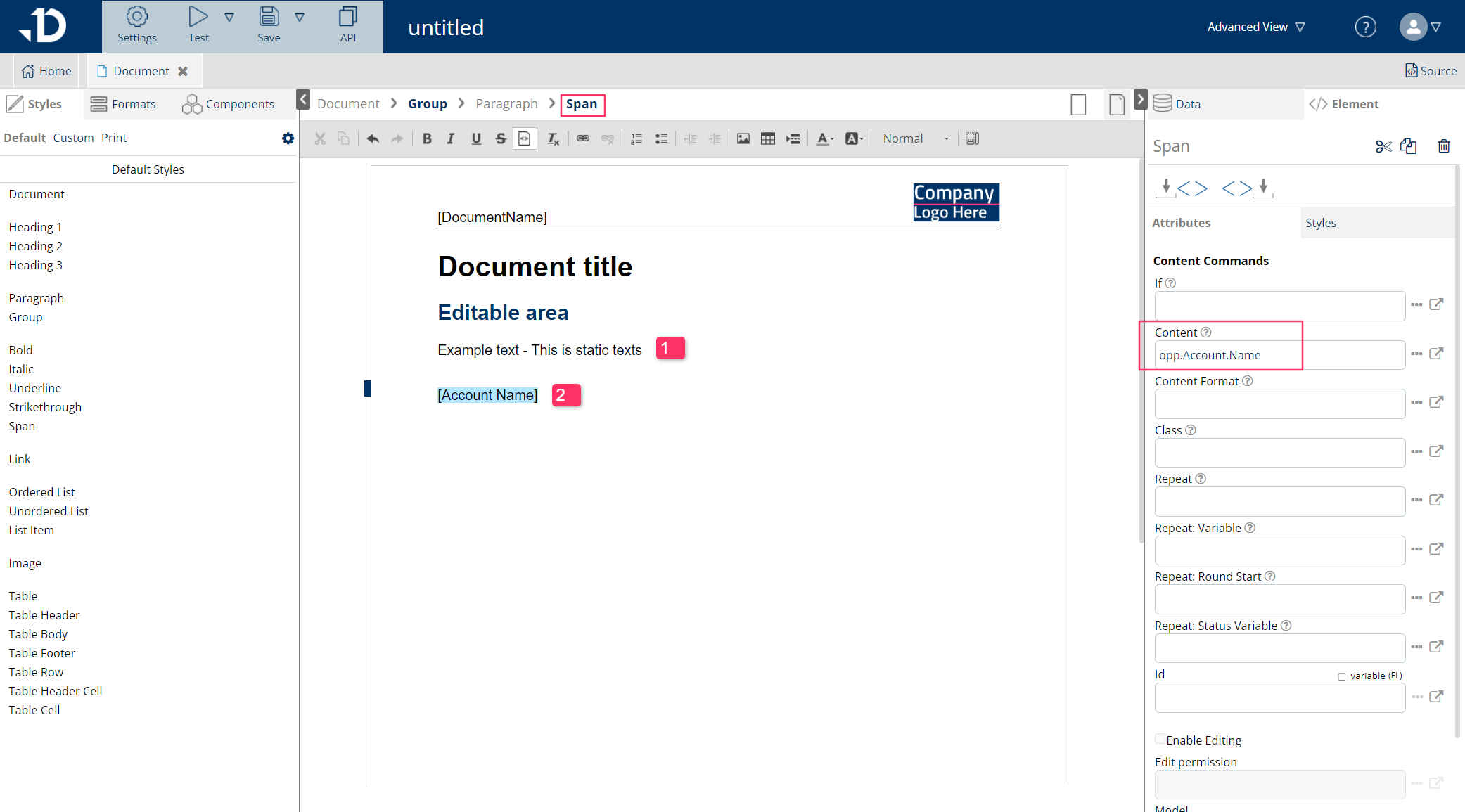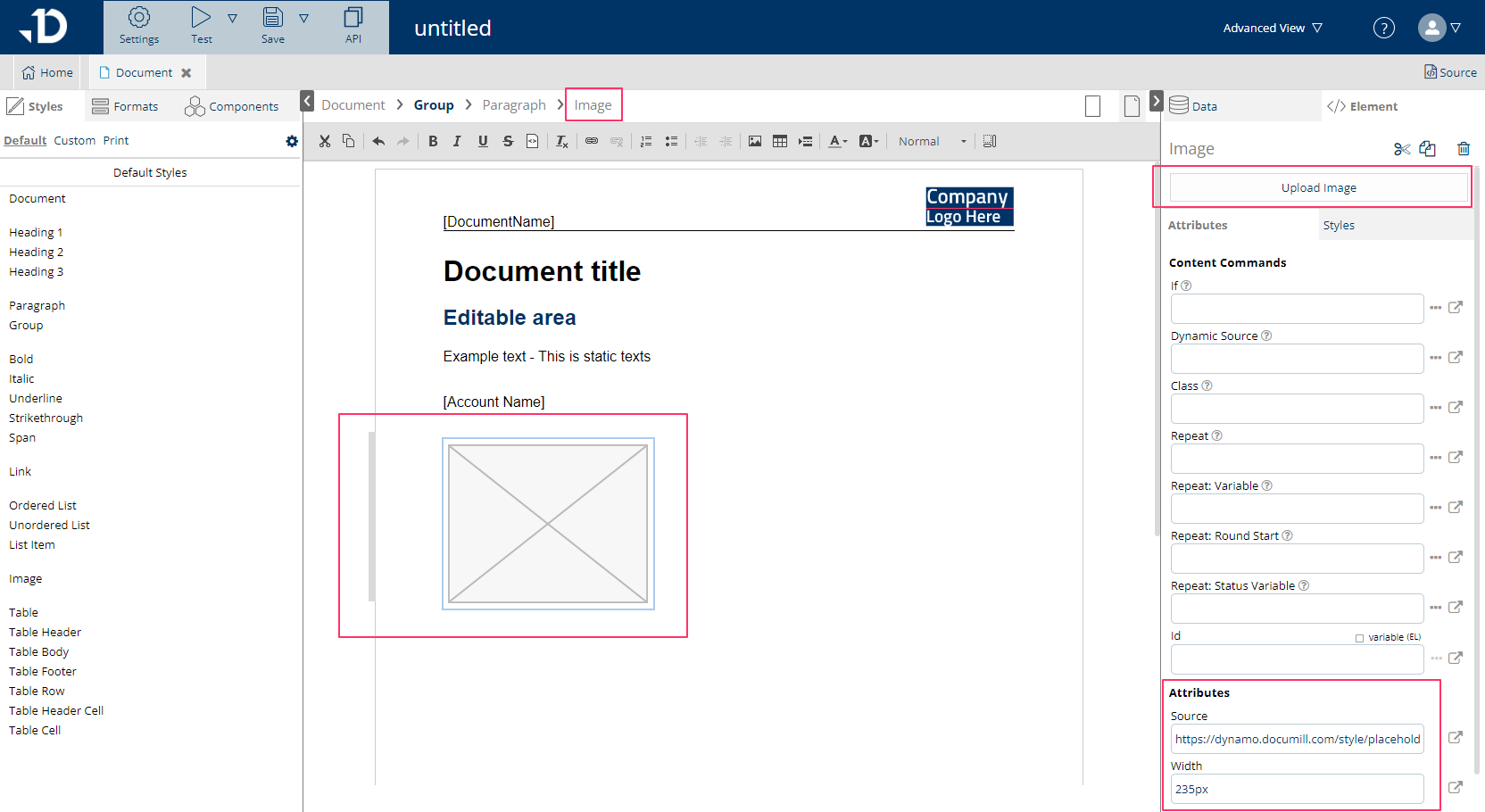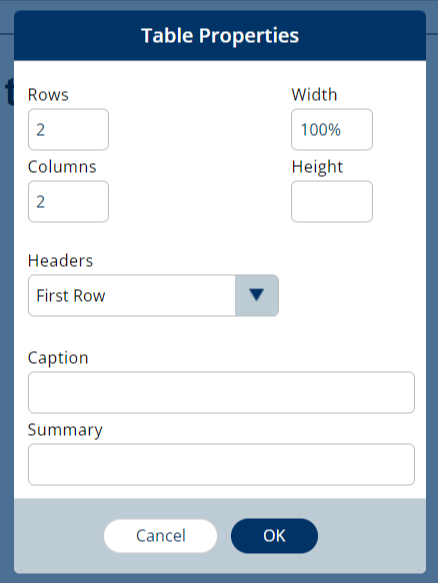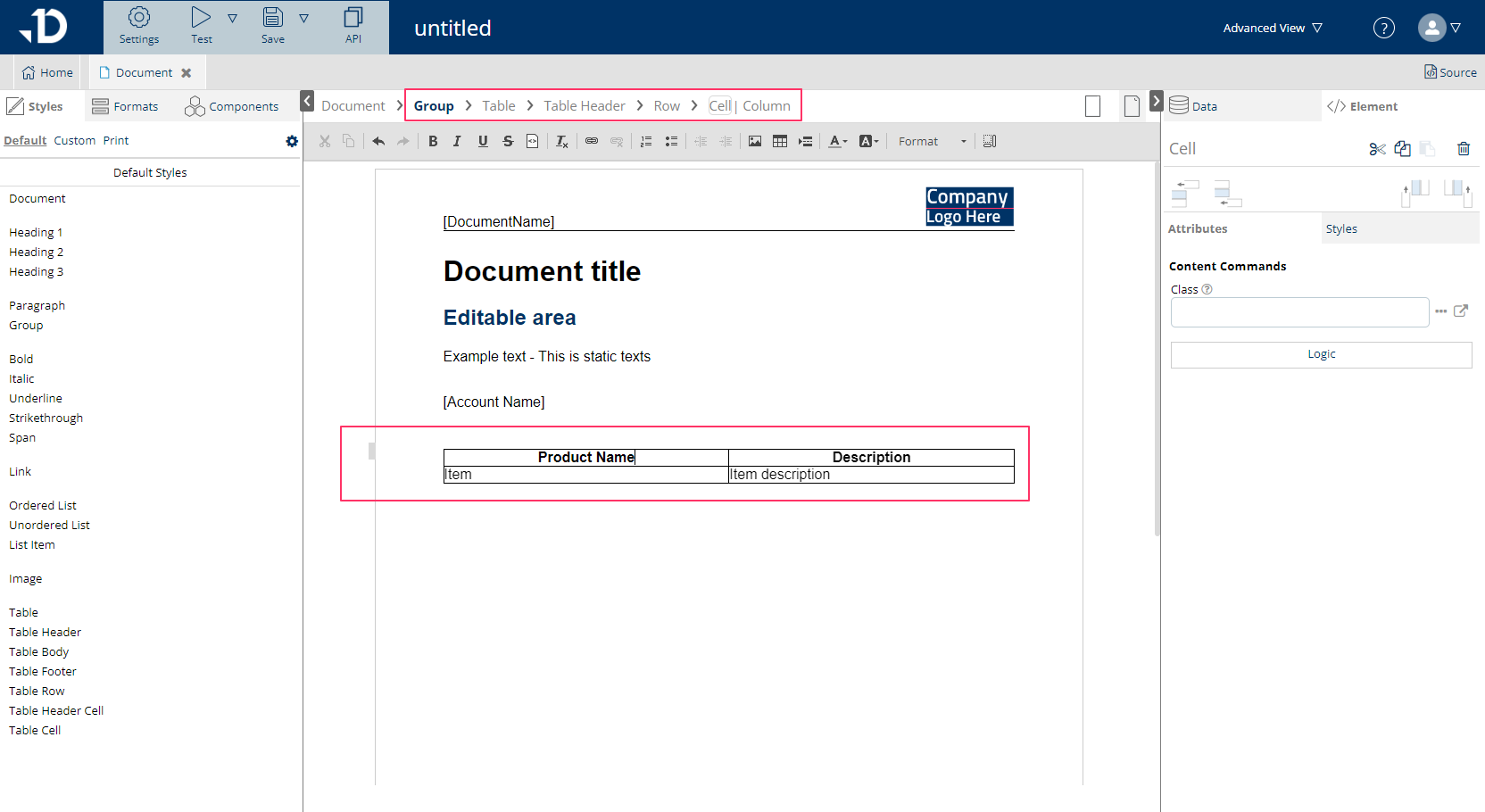Adding Content Elements
Adding a content element in template design refers to incorporating a specific piece of content, such as text, images, tables to present the data and the content in correct format and fit with business needs.
After mapping all the needed contents, the author can move on with styling those elements to fit with the company’s branding and configuring the template flow to allow users to go through a certain document generation process. Based on business needs, there are multiple ways to customize the document workflow. The easiest way is to use Settings. For specific customized needs, there is also an advanced way to configure the flow, by using commands, steps and screens. Find out what are the next steps:






